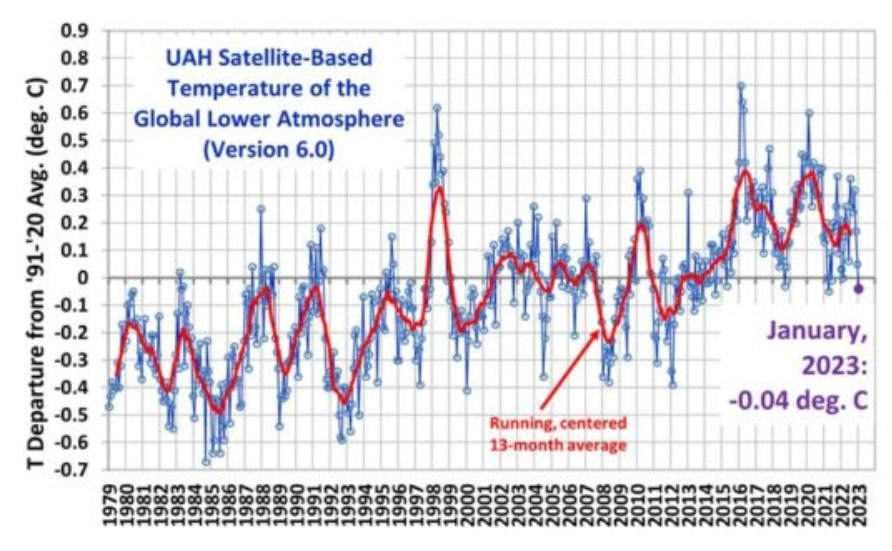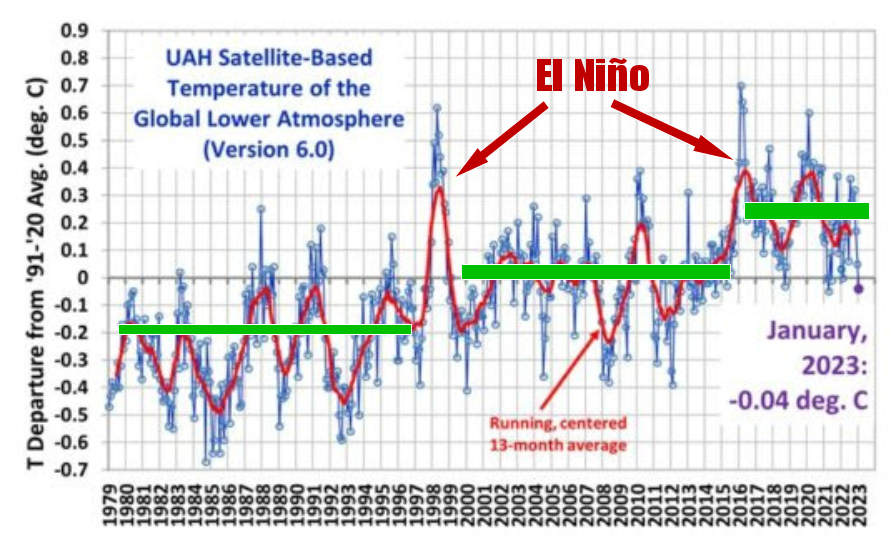Satellite temperature observations

02/10/2023 20:43 - Posted by Tom van Leeuwen
This month of January 2023, the average satellite temperature published, by Dr. Christy and Dr. Spencer (University Alabama Huntsfield) had a negative deviation, compared with the average monthly measures between 1991 and 2000.
Of course, this value does not mean much, it's definition is full of arbitrary begin and endpoints, but anyway it doesn't sound like a lot of warming has taken place over the past 30 years, and even less "catastrophic warming" we're reading about in the Mainstream Media, newspapers and TV stations.
Satellite temperature measurement is the most reliable and objective source available, because the value is not affected by temperature station distribution or quality or the Urban Heat Island effect.
It measures the actual temperature of the whole surface, urban and rural, continents and sea, and every square meter is included the same way in the final result.
There seems to be a small warming tendency going on, how is that possible?
Since 1850 the Earth is recovering from the Little Ice Age, that's the coldest period of the past 10,000 years (the Holocene). The warming seems to be around 0.5 °C from 1979 to 2023, that's around 1°C per century, well within the normal, natural variation.
When we observe the graph in more detail, the following trend is clearly visible.

We observe a step-wise increase, and every step is initiated by a strong El Niño event. Large quantities of warm water that is stored in the deepest parts of the Earth's oceans near Indonesia rise by convection to the surface and warm the whole Pacific Ocean eastward up to the South-American coast. These events have a global-wide impact on the climate.
The rising temperatures can not be caused by Greenhouse Gases like CO
2, because the increase would be gradual, not step-wise.
Moreover,
the CO2 greenhouse effect is saturated because this gas only absorbs a small fraction of the IR- radiation spectrum. All energy present in these frequency bands is already absorbed by the current CO
2-concentration, so adding more CO
2 does not have a measurable effect on the Earth's temperature.
Tom van Leeuwen, February 10th, 2023.

